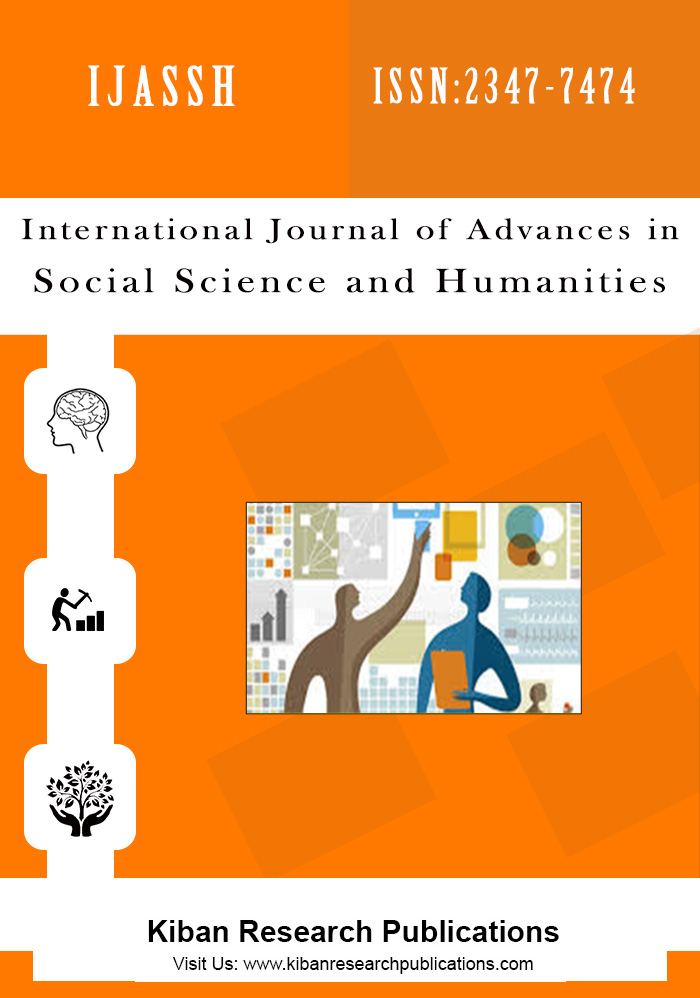Folk Media for Agricultural Extension: A Study of Yakshagana – A South Indian Folk Theatre
Abstract
Agricultural extension is an important prerequisite of agricultural development in developing countries like India. Studies have proved that folk media play a significant role in agricultural communication, especially in extension activities. The present paper examines the role of Yakshagana in agricultural extension from the perspective of Diffusion of Innovations. Yakshagana is a 500-year-old south Indian folk theatre, popular in the coastal districts of Karnataka. Because of its flexibility, Yakshagana is being used for disseminating different development messages for the past many years. Using an exploratory method, the present paper attempts to identify major milestones in using Yakshagana for agricultural extension. The changing role of Yakshagana in looking at the changing approaches to agriculture has also been examined.
Â
Keywords: Agricultural extension, Development communication, Diffusion of innovations, Folk media, Folk theatre, Yakshagana.
References
Anderson, J. R. and Feder, G. (2004). Agricultural extension: Good intentions and hard realities. The World Bank Research Observer, 19(1), 41-60.
Ashton, M. B. (1969). Yakshagana: A South Indian folk theatre. The Drama Review, 13(3), 148-155.
Bapat, G. (1998). Semiotics of Yakshagana. Udupi: Regional Resource Centre for Folk Performing Arts.
Chapke, R. R. and Bhagat, R. (2003, July 15). Traditional folk media – An effective communication tool for social development. Paper presented during International Seminar on People’s Traditional Wisdom in Agro-ecosystem Management, held at Florence, Italy. Retrieved from https://rb.gy/8g9x62.
Chapke, R. R. and Bhagat, R. (2006, November 1). Traditional folk media: A potentially effective communication tool in rural areas. Paper presented during 22nd Annual Conference of the Association of International Agricultural Extension and Education. Florida, USA. Retrieved from https://rb.gy/luvvx4.
Chauhan, N. B. (2004, February 17-18). Corrective approaches of communication for sustainable extension services in India. National workshop on communication support for sustaining extension services. Banaras Hindu University, Varanasi. Retrieved from https://rb.gy/rpuojc.
Chiovoloni, M. (2004). The interactive power of local and traditional communication systems. Ileia Magazine, April 28, 2004, 1-4.
Coldevin, G. (2007). Making a difference through development communication: Some evidence-based results from FAO field projects. In J.Servaes (Ed.) Communication for development and social change (232-251). New Delhi: Sage Publications.
Damle, C. (1986, February 2). Hosa ashayada nellura gella. Mungaru.
Datt, R. and Sundharam, K. P. M. (1999). Indian Economy. New Delhi: S. Chand & Co. Ltd.
D’Silva, M. U., Walker, K. L. and Hart, J. L. (2008). The HIV/AIDS pandemic: Examining a global health problem from intercultural communication perspectives. Intercultural Communication Studies, 17(4), 36-43.
Ishwarachandra, B. G. (2020). Samvahana madhyamavagi yakshagana: Ondu vishleshanatmaka adhyayana. Unpublished PhD dissertation submitted to Kuvempu University, Karnataka.
Joshi, M. P. (1998). Vagartha. Puttur: Karnataka Sangha.
Joshi, M. P. (2006). Yakshaganadalli vastu-mandane: Kelavu tippanigalu. In Padekallu Vishnu Bhat (Ed.). Sukruti- Prof. T. Keshava Bhatta Samsmarana Samputa. Udupi: Prof. T. Keshava Bhatta Samsmarana Samiti. p. 311-330.
Katz, E. (1957). The two-step flow of communication: An up-to-date report on hypothesis. Public Opinion Quarterly, 21, 61-78
Kumar, S. (2010). Role of Yakshagana in Development Communication. In Nandini Lakshmikantha & Krishnamurthy Sitaram (Ed.). Media Researcher. Bangalore: PG Dept. of Journalism and Mass Communication, Acharya Institute of Graduate Studies.
Madhyastha, S. (2005). Yakshagana as a tool for development communication. In Kamalipour, Y. R. & Dasgupta, B. Global Media Journal. MIC, Manipal.
Melkote, S. R. & Steeves, H. L. (2001). Communication for development in the third world: Theory and practice for empowerment. New Delhi: Sage Publications.
Ranganath, H. K. (1980). Using folk entertainments to promote national development. Paris: UNESCO.
Rao, K. B. (1973). Yakshagana. Mangalore: Kubanoor Balakrishna Rao.
Rogers, E. M. (1962). Diffusion of innovations. NY: Free Press of Glencoe.
Sen, A. (1981). Poverty and famines: An essay on entitlement and deprivation. Oxford: Oxford University Press.
Shanthimoole, M. T. (2011). Krishi vijaya yakshagana prasanga. Narnakaje, Sullia: Karthikeya Prakashana Kayaka Sangha.
Sherman, T. C. (2013). From 'grow more food' to 'miss a meal': hunger, development and the limits of post-colonial nationalism in India, 1947-1957. South Asia: Journal of South Asian Studies, 36 (4). pp. 571-588.
Someshwar, A. (2013). Yakshataru. Mangalagangothri: Dr. P. Dayananda Pai & Sri P. Satish Pai Yakshagana Adhyayana Kendra.
Usharani, N. (1994). Alternative media: New dimensions. Communicator, 29(1), 1-5.
Valbuena, V.T. (1993). Weaving together folk media and mass media. Development Communication Report No. 74, Singapore.
van der Ban, A. W. & Hawkins, H. S. (1996). Agricultural extension. Hoboken: Wiley.




